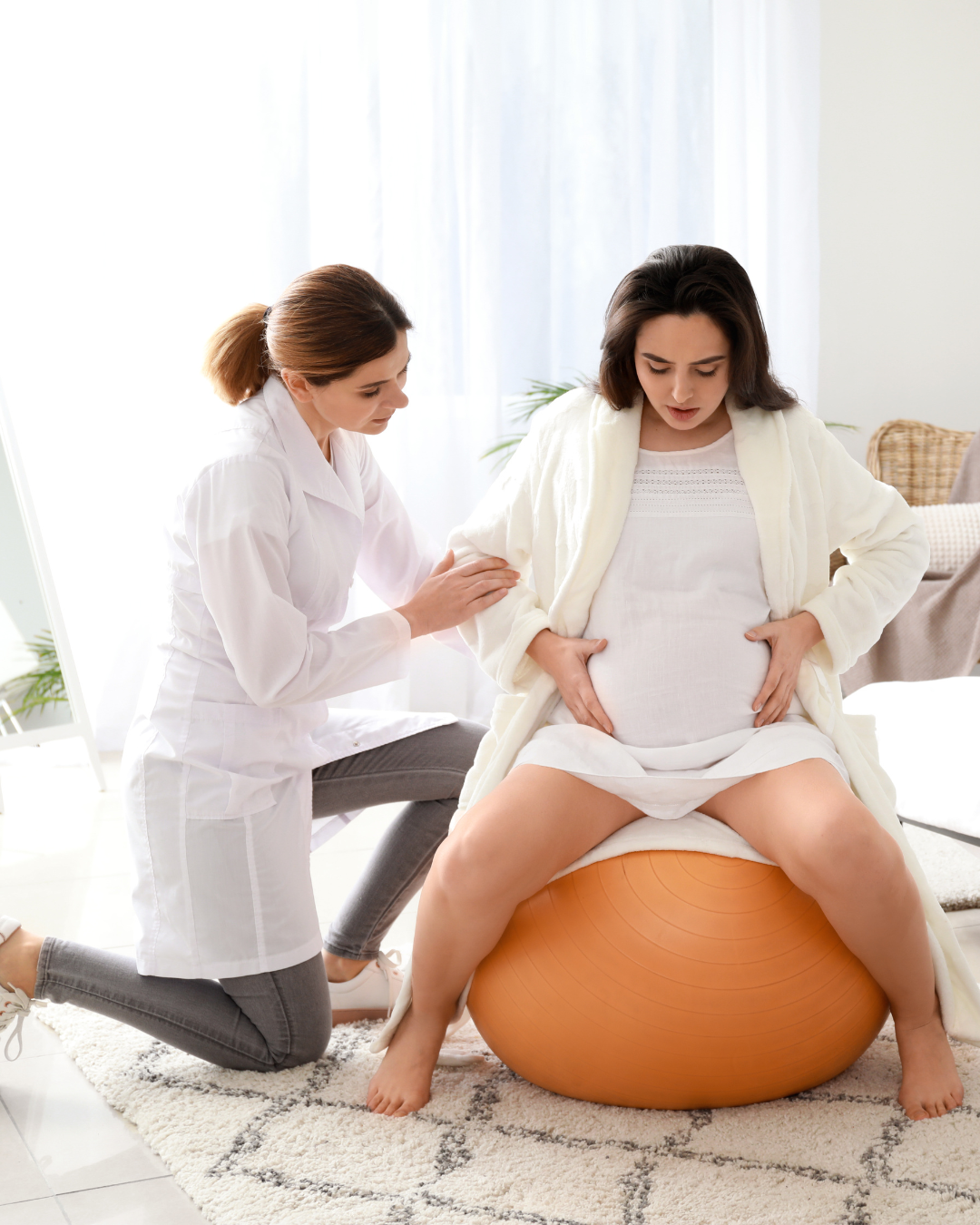A birth ball, that is!
I often find myself teaching postnatal yoga while sitting on a birth ball, balancing two babies on my knees. I joke that the ball was the best piece of equipment I bought for the studio. Although I say this in jest, there is great truth to this statement!
The birth ball, a basic 65 cm physio ball for a woman of average height (the knee should be at a 90 degree angle), can be a wonderful asset in creating comfort during pregnancy, labor and postpartum. During pregnancy, especially throughout the last trimester when back pain seems to be the worst and fetal position is of most importance, sitting on the birth ball can help align the pelvis, creating an anterior tilt. This subtle forward tipping of the pelvis will encourage the baby towards the mother’s belly, as opposed to leaning back against her spine in a posterior position. Also, when the pelvis assumes this gentle sway, the position forces the architecture of the body into good posture and engages the abdominal and lower back muscles, which can alleviate back pain.
Some women also find the rocking movement that naturally occurs when sitting on the ball very calming and comfortable, and it can relieve pelvic floor pain and discomfort from hemorrhoids. This rocking or bouncing idea leads me to my favorite postpartum use: Helping to quiet your baby! I don’t know what it is that they respond to, but they seem so happy and content with a little bouncing and rocking. For the past 6 years, I have found this to be my favorite baby-quieting technique. And again, it is good for posture, which during the postpartum period tends to slump due to fatigue and weak back and abdominal muscles.
So let’s move on to the namesake of the birth ball – using the ball during birth! I find the birth ball invaluable during labor. There are so many uses for it! Let’s start with the basic: The all-fours position is a popular and favorite position to assume during labor. It takes the pressure off the mother’s back and helps to encourage the baby to stay in a good position. Since labor may last awhile, it is a lot more comfortable to spend the time draped over the birth ball than it is to have the palms completely pressed into the floor with pressure on the wrists. This position also slightly angles the torso upwards and uses gravity to press the baby’s head downwards against the cervix, which will encourage dilation. A similar usage is to put the ball on a bed or couch and have the mother hang over it. While the mother is at rest on the ball, the birth partner may be massaging her back or applying counter pressure, heat or ice. You can also place the ball in the shower or bathtub and have have the mother sit on the ball while allowing the water to run along her body. This way she can enjoy the sensations of the warm water while staying passive and at ease. The laboring mom may also just simply enjoy sitting and rocking or circling her hips in a figure eight motion. The rocking can be comforting and relaxes the back muscles. I usually find that at some point, usually near or in transition, the pressure of the ball against the pelvic floor gets to be too much and it may just be used to lean against.
I have also found that hospital staff are very open to the use of a birth ball, since it does not inhibit the usage of the EFM (External Fetal Monitors). Some hospitals even provide them. However, if you borrow one from the hospital or birth center, I would recommend that you clean it – and DEFINITELY put a chuck pad over it. You don’t want to put your bottom where so many have sat before.
So there you have it! Three very useful purposes for one very small investment! Yes, I know New York City apartments are not particularly spacious and the ball may be rather in the way. Do what I did: I color-coordinated the ball with the decor of the yoga studio!
Happy bouncing!







